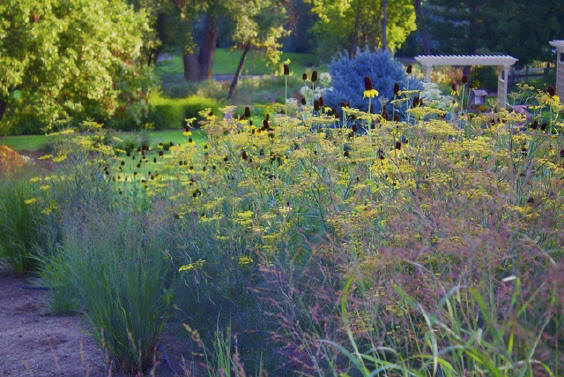When I was a kid, I was quite the "tomboy". I lived on a farm, and my favorite playground was the woods - climbing trees, building forts, and exploring. To me all insects were bugs - - - simply an annoyance and something to be ignored, sometimes feared, but mostly stepped on, squashed, or annihilated in any way possible. The same went for living microbes in the soil. Dirt was dirt.

No one ever taught me that lots of those creepy crawlies were important to the health of our planet. No one ever taught me how fascinating an insect’s life can be if you just take time to observe and pay attention. No one ever taught me that if all insects were to disappear from the earth, the earth could not exist. I was a smart kid, an "outdoors" person, a fledgling gardener, and a college graduate, but no one taught me these things - not my parents, my high school or college science teachers, the Girl Scouts, or even the Master Gardener Training Sessions at that time.
It wasn’t like no one knew about the benefits of insects. Several early biologists and conservationists published books warning us that we were not taking care of our planet, but the information didn’t seem to enter public conscientiousness until relatively modern times. For instance, in 1962, Rachael Carson warned against the dangers of insecticides, especially DDT, in her book, The Silent Spring. Her research finally convinced President Nixon to ban DDT in 1972, but Ms. Carson did not live to see her life work brought to fruition.
Dr. Edward O. Wilson, a Harvard graduate, was one of our best-known Biologists of modern times. He published many books, and was known as the Father of Biodiversity and was most highly respected in his field. We recently lost him in 2021. How many of you have ever heard of him?
My point is that we have needed someone with the right credentials, but also the charisma to bring the message to the average gardener/homeowner. That someone, I believe, is Dr. Doug Tallamy from the University of Delaware. Dr. Tallamy is spreading the message that we need a "Homegrown National Park". In his first book, Bringing Nature Home (2007), he talked about the importance of native plants and caterpillars. Somehow, that book caught the attention of the public, and Dr. Tallamy has become a household name among gardeners. Once he convinced us of the importance of protecting the beneficial insects, he has now offered us a follow-up book, Nature’s Best Hope (2020), in which he explains the importance of connected habitats, not just isolated "islands" of native vegetation, which, of course, is a step above "no native vegetation", but not good enough. Dr. Tallamy is encouraging all homeowners to provide native habitat for wildlife that will connect across
the nation. Thus, his concept of a "Homegrown National Park".
I recently was privileged to see and hear Dr. Tallamy speak in person when he came to the Rec Park in Gettysburg, PA. It was a terrific experience, but the amazing part of it to me was the fact that I read about the event in a small newspaper blurb, and in a very short period of time, the event was completely sold out! What a wonderful step forward in the name of conservation and biodiversity!
As we are seeing, these "new" ideas take quite a while to work their way down. They start at the top in the learned world of academia, and very slowly work their way down to the "grass roots" homeowner. It all comes down to changing the perception of what is beautiful when it comes to home ownership.
The current perception of the beautiful uninterrupted manicured lawn came about in the U.S. following WWII when the GI bill helped make home ownership available to thousands of returning servicemen. Up until then, large green lawns had been popular among the very wealthy. Now, in the United States, it became the American Dream available to all the middle class. The lovely, green lawn became a symbol of status and pride.
No self-respecting homeowner would allow a "Weed" to mar his perfect expanse. As close as the nearest garden center, he had an arsenal of lethal herbicides available to make sure that dream could be accomplished. Native plants were viewed as weeds because they could be found growing along roadsides and in ditches. Any harsh chemical available was used to eradicate any insect that dared to appear in that sea of perfection. Exotic plants from other continents were looked upon as superior and quickly became the most desired product.
Reel type push lawnmowers gave way to rotary gasoline powered motors that were then joined by lawn tractors. Each step destroyed more habitat of important, native insects, used more fossil fuel, and let’s not forget the billions of gallons of water it took to keep those chemical guzzling lawns green.
Finally, thanks to our past mentors, people are beginning to get the message that we have to do better. We need to protect, not annihilate those beneficial insects, and maybe, just maybe, some of those "weeds" aren’t so ugly after all. Dr. Tallamy is providing us with the research and knowledge, and master gardeners, like myself, are working to spread the word.
Read other articles on ecological gardening & native plants